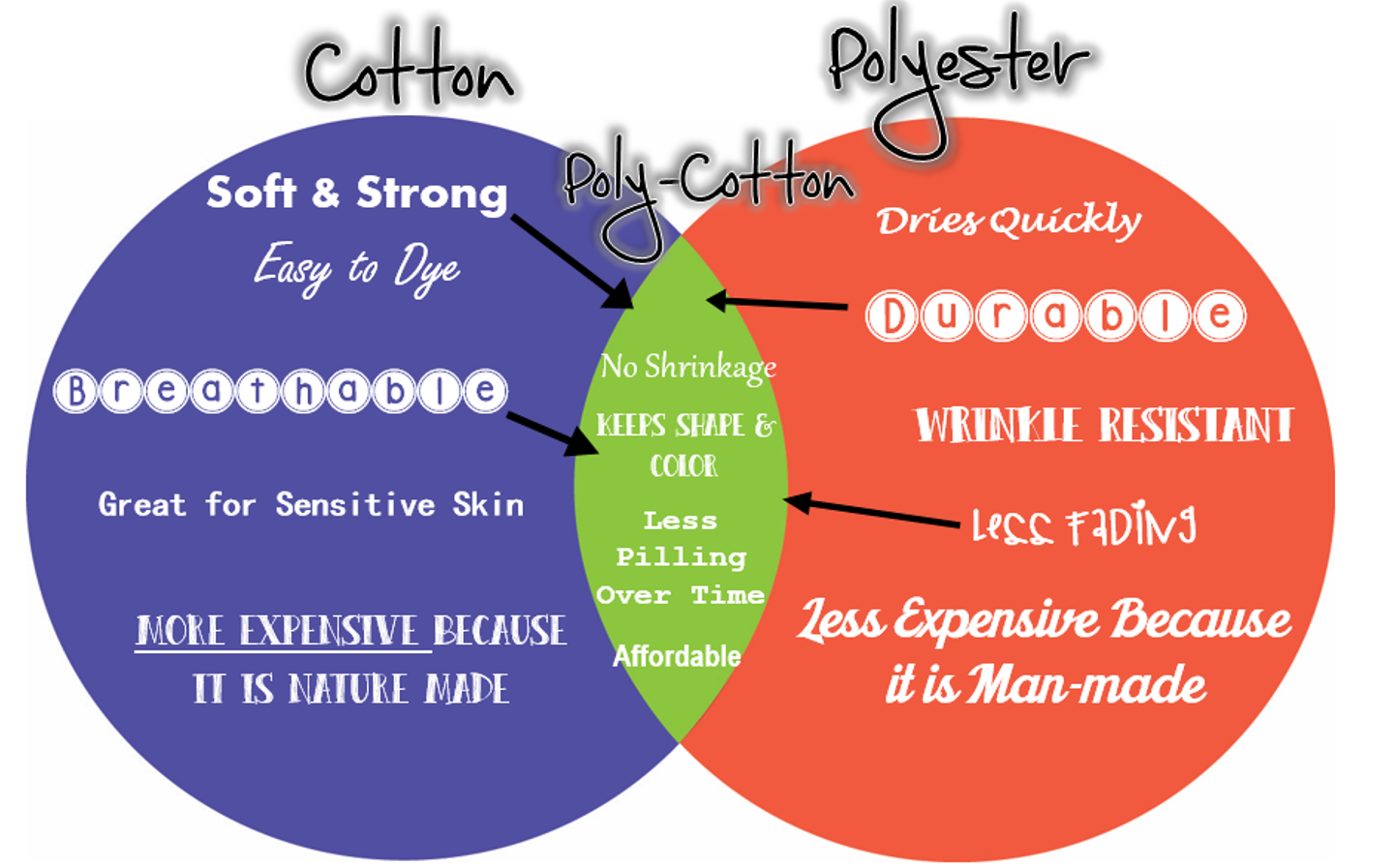Fabric Choices: Pros & Cons
October 1st 2015
Choosing the Correct Fabric
This is for all hospitality, lodging and healthcare personnel to use as a guide to make the best choice of fabric for their business. When shopping for bedding in the lodging or healthcare industry there are a few types of fabric that you will come across: polyester, cotton, polyester cotton blends, and microfiber blends. The following article is going to decipher the characteristics of all the popular industry fabrics. Not only can choosing the correct fabric be taxing but so can figuring out the optimal way to care for the different fabrics. Below are advantages and disadvantages of each type of fabric option.Polyester
Polyester is a man-made fabric therefore it tends to be less expensive when compared to a fabric found in nature such as cotton. Polyester is highly wrinkle resistant, extremely durable, tear-resistant and can retain its shape much longer than cotton. Some disadvantages of polyester are that it is minimally breathable making it warmer, the fabric tends to pill over time and oil-based stains are difficult to remove from this fabric.Cotton
Cotton is a very breathable and soft fabric which means that it will keep your guests cooler. It is a great choice for hotels in warmer climates or facilities that are only open during the summer months. Unlike polyester, cotton fabrics are much easier to remove stains from and naturally do not contain any chemicals, but some cotton bedding is treated with chemicals to become flame retardant. Cotton is also hypoallergenic and generally doesn’t irritate the skin or cause allergies. Some disadvantages of 100% cotton items are that they do not retain their shape after multiple washes, it tends to wear and rip more quickly than man-made materials and over time it can shrink.Poly/Cotton Blends
With poly/cotton blends you truly can have the best of both worlds. By blending these two fabrics together the result is a strong material that is durable and affordable. By combining cotton and polyester, the fabric is less likely to pill after washing and is more breathable. Another benefit of poly/cotton blends are that they are also less likely to shrink when compared to 100% cotton items. One disadvantage is that poly/cotton blends can be slightly more expensive than just a polyester bedspread.Microfiber
Technology has brought luxury and comfort to the bedding world with microfiber, which consists of ultra-fine fibers woven together tightly to create a super soft fabric. Currently, you can find polyester, nylon, rayon and acrylic microfiber blends. There are many advantages of incorporating microfiber fabrics into your property. It resists wrinkles, mildew, stretching, static cling, shrinkage and most stains. It also offers insulation yet is still breathable and the colors stay vibrant longer than other fabrics.
Care & Maintenance for Fabric
One of the most cost effective actions you can take is properly caring for and maintaining all of your fabric items including blankets, bedspreads, pillows and bath towels.- The first and most important step in maintaining your fabrics is to always reference the product care label for washing instructions.
- It is important to note that as much as you would love to, chlorine bleach should not be used on your fabrics! Chlorine bleach unfortunately breaks down the fabrics fibers and the batting or filling within your bedspreads.
- Use the permanent press setting on your wash machine. If you do not have this setting use the gentlest setting available. It is recommended to always wash in cold water unless the care label states warm water is acceptable.
- Note: The permanent press setting washes with warm water and rinses with cool water along with using a mild agitation that is much gentler on your bedding.
- It is recommended to use gentle detergent and to avoid using fabric softeners including dryer sheets.
- Note: It is especially recommended to avoid fabric softeners when washing towels as it reduces the effectiveness of absorption.
- Tumble dry all bedding items with no heat or hang to air dry as heat can cause the fabric to shrink.
Learn to Read the Labels

A Natural & Effective Cleaner
As an alternative to bleach and fabric softeners, vinegar has many great uses when laundering fabrics. I know what you’re thinking, “I don’t want towels or bedding to smell like vinegar!” Trust me, they won’t and you will be amazed that you haven’t incorporated this product into your washing routine sooner. Biggest Advantage of Using Vinegar- Vinegar kills germs, bacteria and pathogens as effectively as chlorine bleach.
- Add ¼ to ½ cup of distilled white vinegar to the final rinse cycle
- Add ½ cup of distilled white vinegar to your wash cycle to boost your detergent
